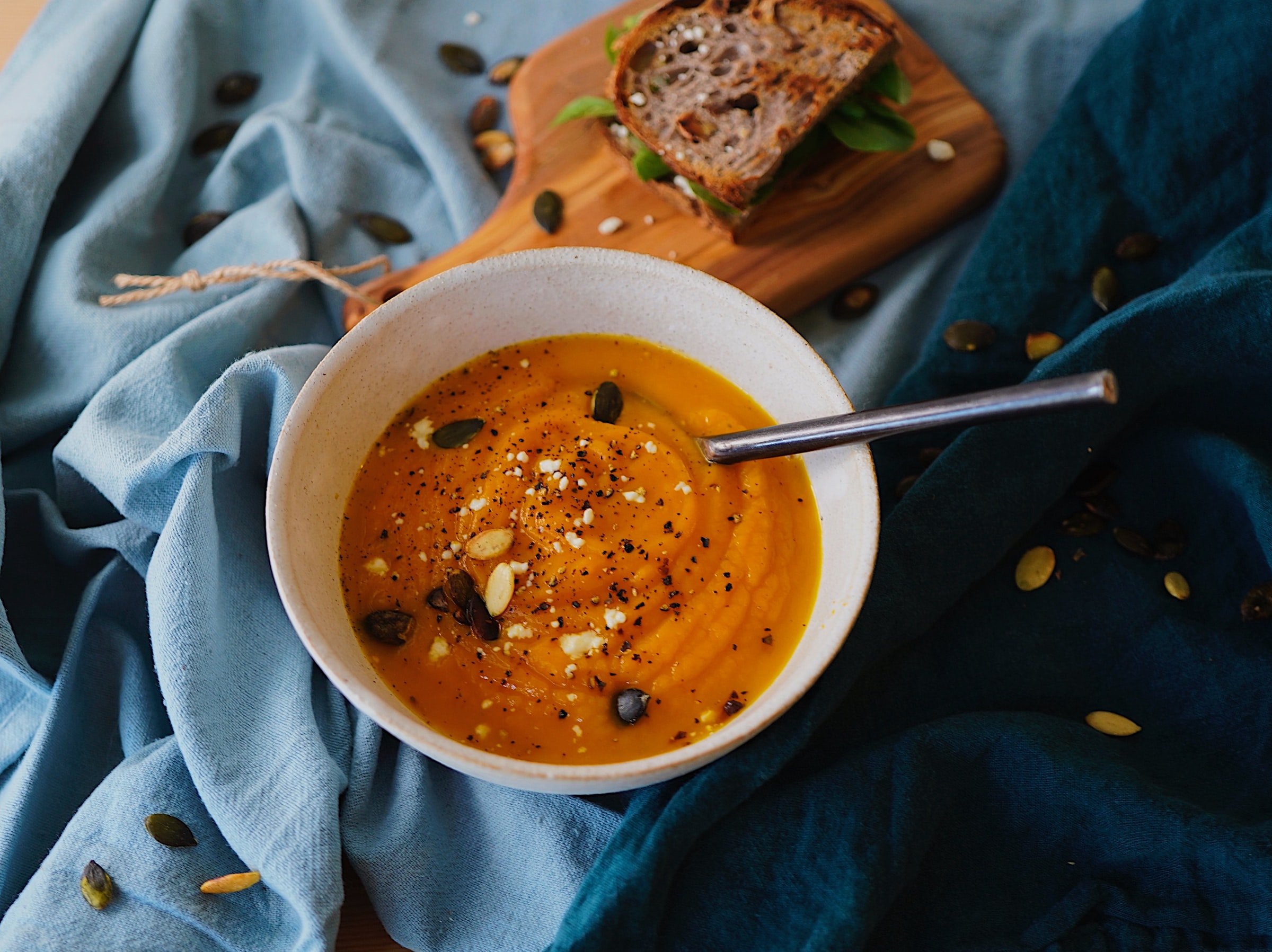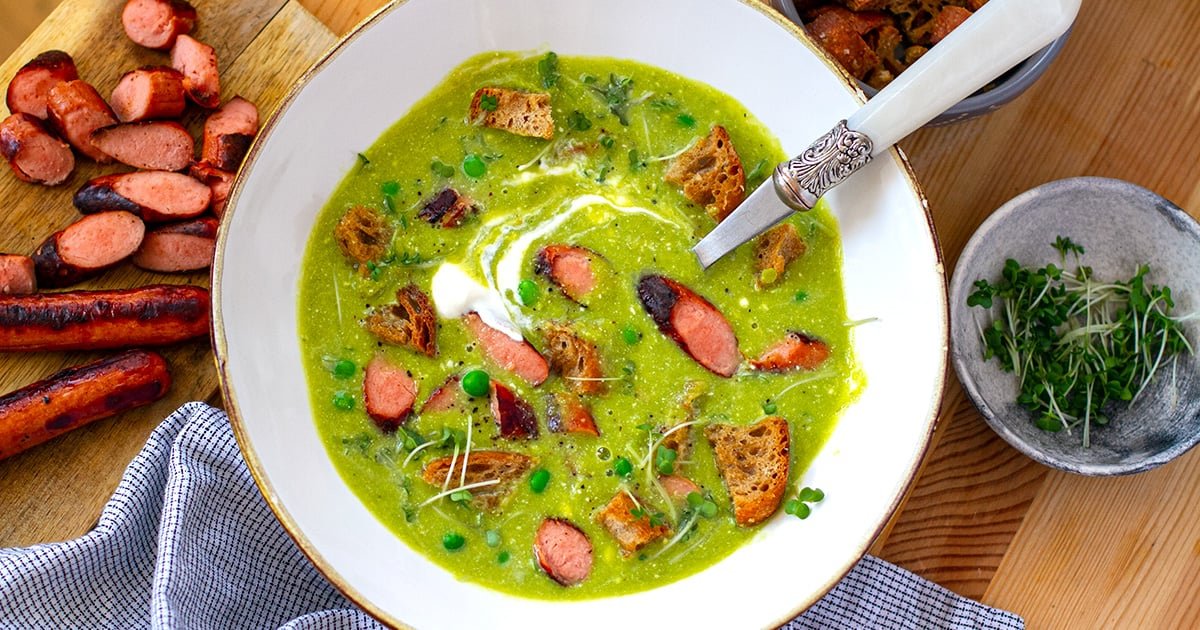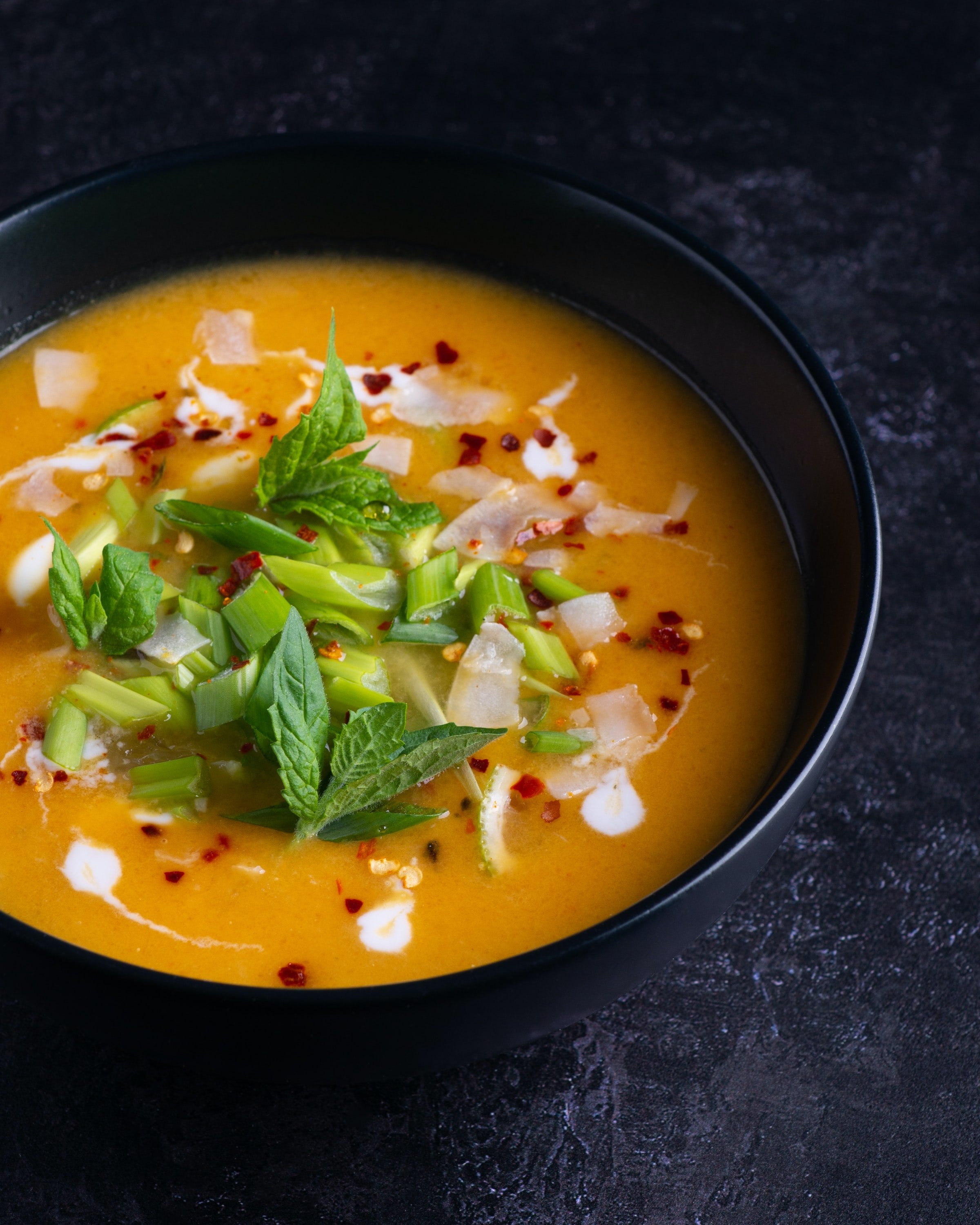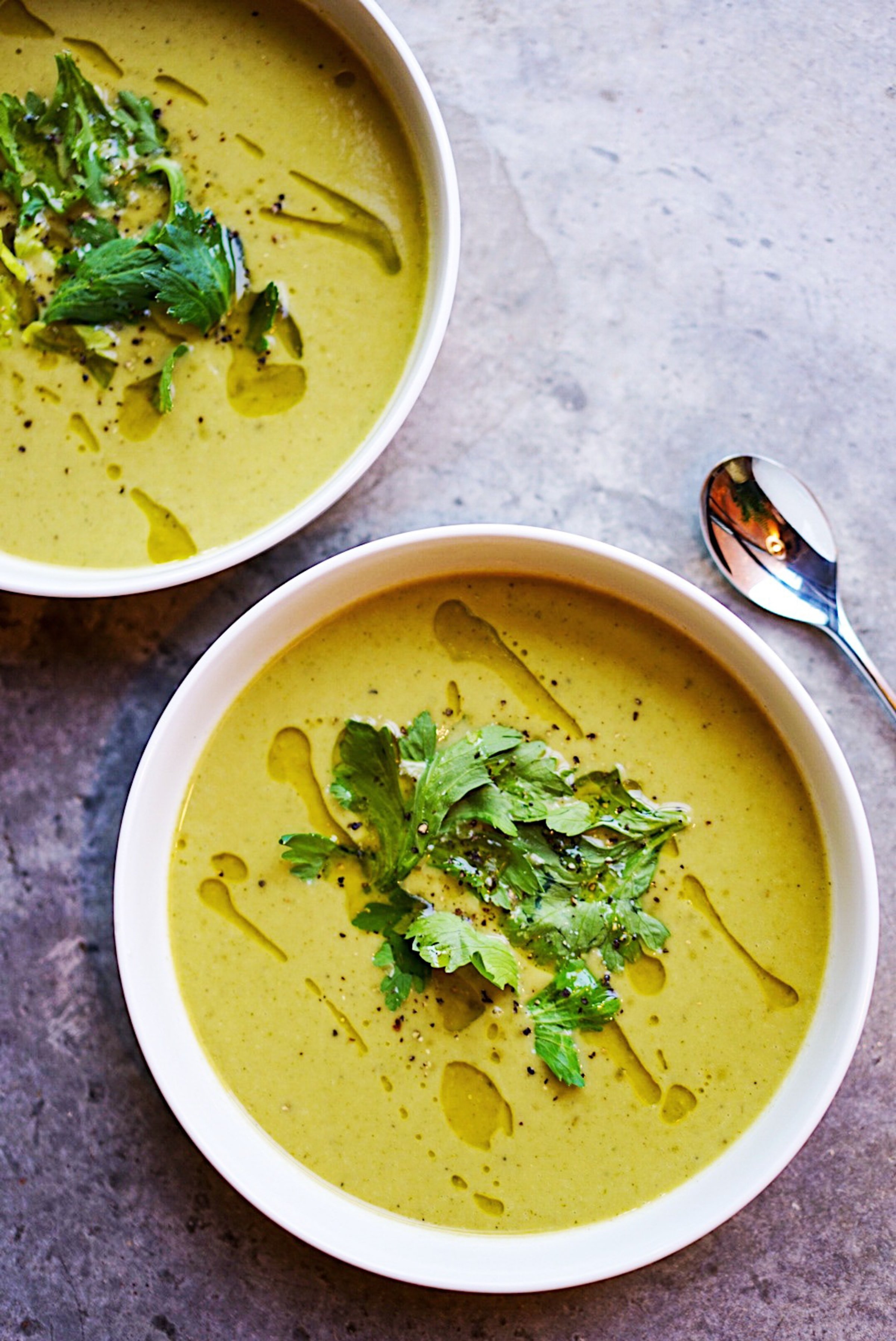Contemporary soup stylings still mainstays of the winter menu
Soups have always been a menu mainstay in the winter months, but given the current staff shortages, and the increasingly smaller footprint in which many commercial kitchens are now operating, chefs and foodservice professionals are increasingly relying on readymade products rather than preparing from scratch.
Requiring only minimal prep time and labour, these pre-prepared soups can be served straight from the pack, but more often chefs are using them as bases to which they can add garnishes, herbs and spices and additional ingredients to create signature dishes. Gary Johnson, National Executive Chef for the ALH Group, says this evolution has been driven by the changing expectations of the consumer, who today wants a sophisticated meal at a value-driven price.
“The aim is to find a consistently good product at the right price that will deliver 100 per cent yield”
“Commercial kitchens rarely cook from scratch nowadays, they don’t have the staff or the space, so what we look for are quality products which can be used as ingredients in finished dishes,” he points out. “It makes good business sense to buy in a quality soup to which the chef can their own finishing touches. Chefs want to be creative – rather than getting out a mix and adding boiling water, they prefer liquid based soups which still give the opportunity to utilise their skills. The aim is to find a consistently good product at the right price that will deliver 100 per cent yield.”
Soups are on the menu all year round in many of ALH’s pubs, but are featured more prominently in winter – “Generally at the start of the season we’ll drop a salad from the menu and add another soups, and that signals the transition to winter,” Gary tells us. “We like to have at least one vegetarian soup and one animal protein – especially when it’s chilly, hearty soups tend to be a main rather than an entrée, as some people say it’s balm for the soul!”
Soup as one component of the overall meal
Gary’s advice is to regard soup as one component of the overall meal, as opposed to on its own. “Just serving a pumpkin soup on its own isn’t good enough anymore – but a curried pumpkin with some green apple, a side of crispy lentil wafers or with some grilled chicken or smoked salmon, and Persian feta crumbled over the top – that’s a meal! Soup is just one part of the equation now – we build on that to create a wonderful feast of colours. A roasted zucchini soup with crumbled smoked salmon over the top, a few drizzles of ricotta and chopped chives will give you a fantastic presentation of the light green of the zucchini, the pink of the salmon, the white of the ricotta and the deep green of the chopped chives.”
“The wonderful thing about soups is that the only limit is your imagination and ability to marry flavours”
And think not just in terms of colours but textures too: “If for example you were to serve a beautiful Moroccan Harira, which is a chickpea based soup, then you could crunch some crispy fried onions over the top, garnish with some fresh chives and serve with a side of toasted buttery sourdough. Curried lentil soup or Indian Madras can be served with a nice dollop of yoghurt on top and a pappadum on the side, or you could serve a roasted Mediterranean vegetable soup with some goat’s cheese crostini. This way you can use a readymade base and still create something distinctive for your menu.”
While classic European soups still resonate strongly with customers, Gary says Asian style soups are also increasingly popular. “A tasty miso soup served with some grilled fish and rice dumplings makes a delicious and visually stylish meal, perhaps garnished with Asian greens or shitake mushrooms. Then you also have the richer soups made with superfoods – like fresh kale blended with tomato and cauliflower.
“The wonderful thing about soups is that the only limit is your imagination and ability to marry flavours. Make sure you think about ingredients and how they complement each other – don’t just look at what you have left over the fridge and say ‘I’ll use these three’ and hope for the best!”
Move towards healthier eating driving demand
And with soups often perceived as a healthier option, the growing move towards healthier eating is also driving demand, says chef Peter Wright. “People are saying, I don’t want something fried, I don’t want a burger, a sandwich is too heavy – so they look to soups. And there are some terrific better-for-you varieties which are trending right now. Green Goddess, for example, which is made with kale, cabbage and brussels sprouts – not only is it really flavoursome, it’s packed full of nutrients. I think with soups today customers are often looking for a big serve of vegies in the one bowl – smoothies are popular for breakfast and if you follow that up with a soup for lunch, it’s like a hot smoothie so you’re getting plenty of your daily vegie allowance.”
East Asian, Indian and Sri Lankan ingredients are also becoming increasingly commonplace in soups here. “Legumes, pulses, daal-based soups – they all boast a very thick consistency, which makes them more filling because they’re high in fibre,” Peter points out. “When you eat a pureed meal, you actually stay fuller for longer than if you have to chew. So pureed soup will sustain the appetite for quite a long period, and I think customers have worked that out – when they have soup for lunch, they’re not craving their afternoon doughnut or coffee.
“When you eat a pureed meal, you actually stay fuller for longer than if you have to chew”
“Winter is definitely the time to add these to the menu if you haven’t already – we have some beautiful winter vegies in season, from pumpkin and sweet potato to legumes and pulses which are all quite cheap. Making a soup is a very cost-effective process and it’s not difficult to explore different flavours – put in a little turmeric, half an orange to add a note of bitterness, cumin and carrot and pumpkin and ginger and you have something that’s very tasty and filling too.
“Plus, if you make a mistake it’s not going to cost you a lot to rectify it – so take the time to experiment with ingredients, you’d be surprised what goes with what!”
Readymade soups make ideal bases
Chef Adam Moore reiterates Gary Johnson’s point about using readymade soups as a base product. “These sorts of products are often designed not as meals in themselves but as ways to build a meal. It’s about offering a shortcut that give chefs the freedom to create by focusing on the things that are more important and take the most time.
“That way they can deliver the goods to the end-user. You’re still adding your own ingredients to make your own distinctive version, but you can also use your inspiration to create the finished meal that your customers want.
“You might have a really good soup base but want a little more depth and flavour in there, so you’ll add other ingredients to bring out the richness and umami qualities of that prod.
“The other consideration is that in an institutional facility, for example, you may have workers who are not qualified cooks or chefs so they’re coming from a different angle, but they’re wanting to learn. So they can use readymade products which save them time and they know they can rely on them to work – the product won’t let them down.”
On the other side of the coin are those foodservice operations which still prefer to prepare from scratch – as Marcus Werner, Executive Chef at Delaware North Australia, confirms is the case for their largescale catering operations. “The base of every recipe is always to make it fresh inhouse,” Marcus affirms. “Obviously there are variations depending on whether we have enough staff and budget, or there’s a time or production issue - then we will have commercial products on hand as a backup.”
“You might have a really good soup base but want a little more depth and flavour, so you’ll add other ingredients to bring out the richness and umami”
Marcus does add, however, “if there’s a product out there which is a very high standard, then possibly we’ll come to the decision that this is a product which we might use everywhere – if we can guarantee consistency.”











